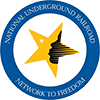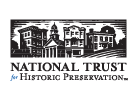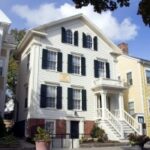Johnson House Tours, July 3, 2014
Tours to be offered at three historic buildings
During the Charles W. Morgan Homecoming, three of the city’s oldest historic buildings will be open to the public.
From 1 to 4 p.m. on July 3, volunteer members of each organization will be offering free tours of the Nathan and Polly Johnson House, the Spring Street Friends Meeting andThe First Unitarian Church in New Bedford, according to a press release.
The Nathan and Polly Johnson House at 21 Seventh St. was a destination on the Underground Railroad that became “the first free home of Frederick Douglass” when he and his wife, Anna Murray, a free woman, arrived in New Bedford in September 1838. The Johnson house now belongs to the New Bedford Historical Society, which was founded to preserve and celebrate the history and culture of the city’s diverse people of color.
Nathan and Polly Johnson were free African Americans who worked as live-in cooks and caterers for Charles W. Morgan and his family. After the Johnsons moved to 21 Seventh St., they sheltered fugitives from slavery and helped them find employment and lodgings of their own. Polly’s delicious cakes and candies made with “free labor sugar” were very popular with New Bedfordites, many of whom were opposed to slavery and protective of both free and self-emancipated persons.
New Bedford offered social and economic opportunity to ambitious African Americans in the whaling industry and in professions whose practitioners offered apprenticeships to conscientious workers. Frederick Douglass started out doing menial jobs such as shoveling coal for Unitarian minister Ephraim Peabody and subsequently became a lay preacher at one of the city’s African churches. Douglass also sold subscriptions to William Lloyd Garrison’s antislavery newspaper The Liberator before he was hired as a paid lecturer for the Massachusetts Antislavery Society.
Diagonally across the street from the Johnson House is the Spring Street Friends Meeting House (No. 83). Built of brick in 1828, it replaced the old wooden Meeting House at 17-19 Spring St. and is still the city’s gathering place for Quakers, who were – and still are – staunch foes of slavery, war and all forms of oppression and injustice.
When a schism divided the New Bedford Friends during the 1820s, many Quakers – birth-right Quaker Charles W. Morgan included – joined The First Congregational Society (Unitarian) whose wooden building later became Liberty Hall. Thanks to Morgan and other wealthy members of the Unitarian Society, the impressive stone building housing the First Unitarian Church in New Bedford at Union and County streets opened for worship in 1838.
Visiting the Nathan and Polly House, the Spring Street Friends Meeting, andThe First Unitarian Church in New Bedford July 3 will inspire you to learn, imagine and experience the city’s illustrious history in places where that history was made.
Nathan and Polly Johnson were free African Americans who worked as live-in cooks and caterers for Charles W. Morgan and his family.






Trackbacks & Pingbacks
[…] House, the city’s gathering place for Quakers, who, as the New Bedford Historical Society states, “were – and still are – staunch foes of slavery, war and all forms of oppression and […]
Comments are closed.